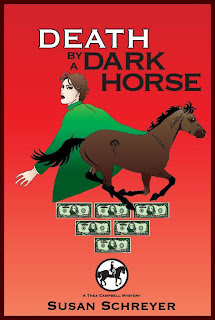Most of the serious work-time we spend on our horses' backs is, or should be, devoted to warming up. Regardless of the goal-of-the-moment, we have to physically and mentally prepare for the day's new lesson.
Yeah, it's tedious.
And no, it can't be skipped.
Not only does the horse need to be prepared before he's asked to exert himself just a little more, but the rider has to prepare, too. Nobody hits the saddle ready to rock and roll. Even when you ride one horse after another there is a certain amount of adjustment, both mental and physical, that needs to be done with each horse.
What happens when we skip the warm up and plunge into the daily lesson? The warm-up insists on being done anyway. It's like a persistent little terrier. It won't go away. And if you don't pay attention and do what needs to be done, it will get underfoot and trip you up. Count on it. You cannot bully this little dog into submission. It will bite your butt.
The plus side is that the better you prepare, the more conscientious you are about your warm-up, the better the performance of the lesson-of-the-day. The warm-up is where you catch the problems and put into effect the solutions. It's where the questions are cleared up and the groundwork laid for more advanced work.
Are you not accomplishing what you thought you should, despite working hard? Take a look at your warm-up. I'll bet you a double-tall mocha you're leaving something out.
Maybe, just maybe, the success we want to experience in other facets of our lives need the same attention paid to preparation. I'll wager another mocha on that one.

.jpg)
.jpg)





